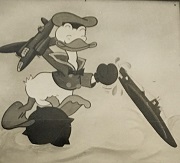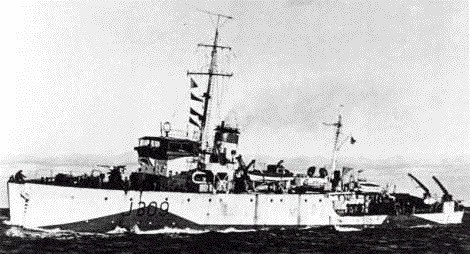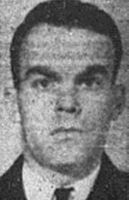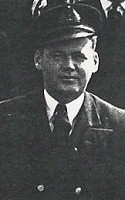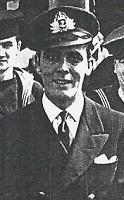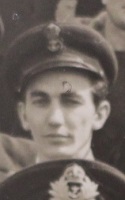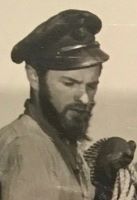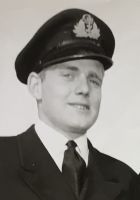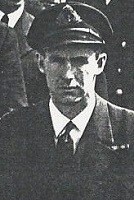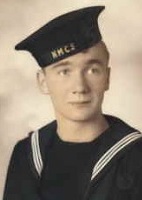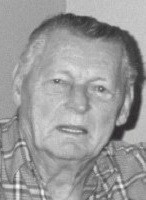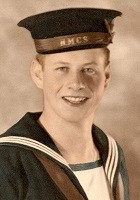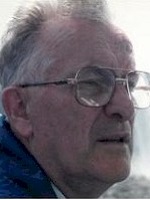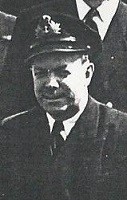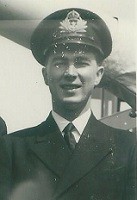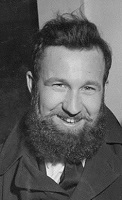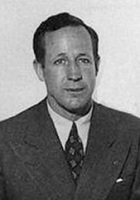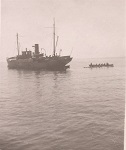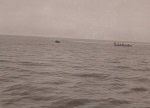|
HMCS SARNIA J309 / 190
Bangor Class Minesweeper
Commissioned at Toronto on 13 Aug 1942, SARNIA arrived at Halifax on 22 Sep 1942, having escorted a Quebec-Sydney convoy en route, and was assigned to Newfoundland Force. In Sep 1944, she underwent a major refit at Lunenburg, and on completion went to Bermuda in Nov 1944 to work up. On her return to Canada she was assigned to Halifax Force and, later, to Halifax Local Defence Force until Jun 1945. On 16 Apr 1945, she rescued survivors of HMCS ESQUIMALT, torpedoed outside Halifax. She then performed miscellaneous duties until paid off on 28 Oct 1945, at Sydney and laid up at Shelburne. In 1946 she was placed in strategic reserve at Sorel and in 1951 re-acquired by the RCN and extensively refitted. She did not re-commission, however, and on 29 Mar 1958 was transferred to the Turkish navy to serve until 1972 as Buyukdere.
The following was submitted by Liam Dwyer, PO ERA, HMCS SARNIA - When we were operating out of St. John's, it was not unusual to sweep up to 12 to 15 mines in a patrol. We had both the paravane sweep and the electrical magnetic field sweep known as the LL Sweep. When we were in operating out of Newfie John you could cut the tension on the ship with a knife. One stoker PO sabotaged the steering hydraulics on the ship and was taken ashore under handcuffs by the Mounties; the Captain became a hopeless alcoholic and had to be taken off; and a seaman went nuts and thought he was some one else. When we did the LL Sweep I had to start up a big Allis-Chalmer diesel to supply electricity to a bladder with two electrodes on it. This bladder was paid out from the stern from a great spool of rubber coated wire. The sparking of the two electrodes would set up a magnetic field triggering the mechanism of the German mines tethered to the bottom the mine would surface and we would destroy it with gun fire. One time we had to bring a mine in for examination by a RN specialist. It broke loose from it's lashing and was free on the deck. The captain mustered all the crew forward of the bridge. Me, being junior ERA got stuck in the engine room with one oilier. (Webmaster's note: This is the oft forgotten part of the war - everyone has heard about the minesweeping operations for D-Day, but nothing is mentioned about the minesweeping off of Canada's shores and the hardships these sailors endured.)
The following was submitted by Lou Howard, SLt, HMCS SARNIA - The following officers were on HMCS SARNIA when she rescued the crew from HMCS Esquimalt - Lt. R. Douty, CO; Lt. Morris C. Shonfield, XO; SLt Pat Salter, E.O.; Lt. Jack Cantril, Signals; Lt. Bill Brown, NavO; Lt. Doug Kirby, Asdic; SLt Lou Howard, bridge watch keeper (and took over from Brown and Kirby as Nav & Asdic)
Photos and Documents Ship's company photos The Ship's Bell
RCN Memories: Crew Member Purrfected Direction Finding SARNIA Sails With WRENS .... And A Wife The Picnic
Commanding Officers
They shall not be forgotten
Photos and Documents
(GM05) HMCS SARNIA J309 (GM06) HMCS ESQUIMALT survivors on a carley float (GM07) Survivors from ESQUIMALT being picked up by the ship's boat from East Halifax Lightship (GM08) Ship's workboat picking up ESQUIMALT survivors (GM09) ESQUIMALT'S dead lay on the quarterdeck of HMCS SARNIA
From the collection of Gordon H. Marsh, Stoker, RCNVR
Courtesy of Murray Marsh
(MA01) HMCS SARNIA'S gunshield art after it was moved to the bridge face - 1944 (MA02-MA03) HMCS SARNIA J309 cloth jacket patches
From the collection of Maurice (Moe) Ahern, RCNVR
|
|||||||||||||||||||||||||||||||||||||||||||||||||||||||||||||||

